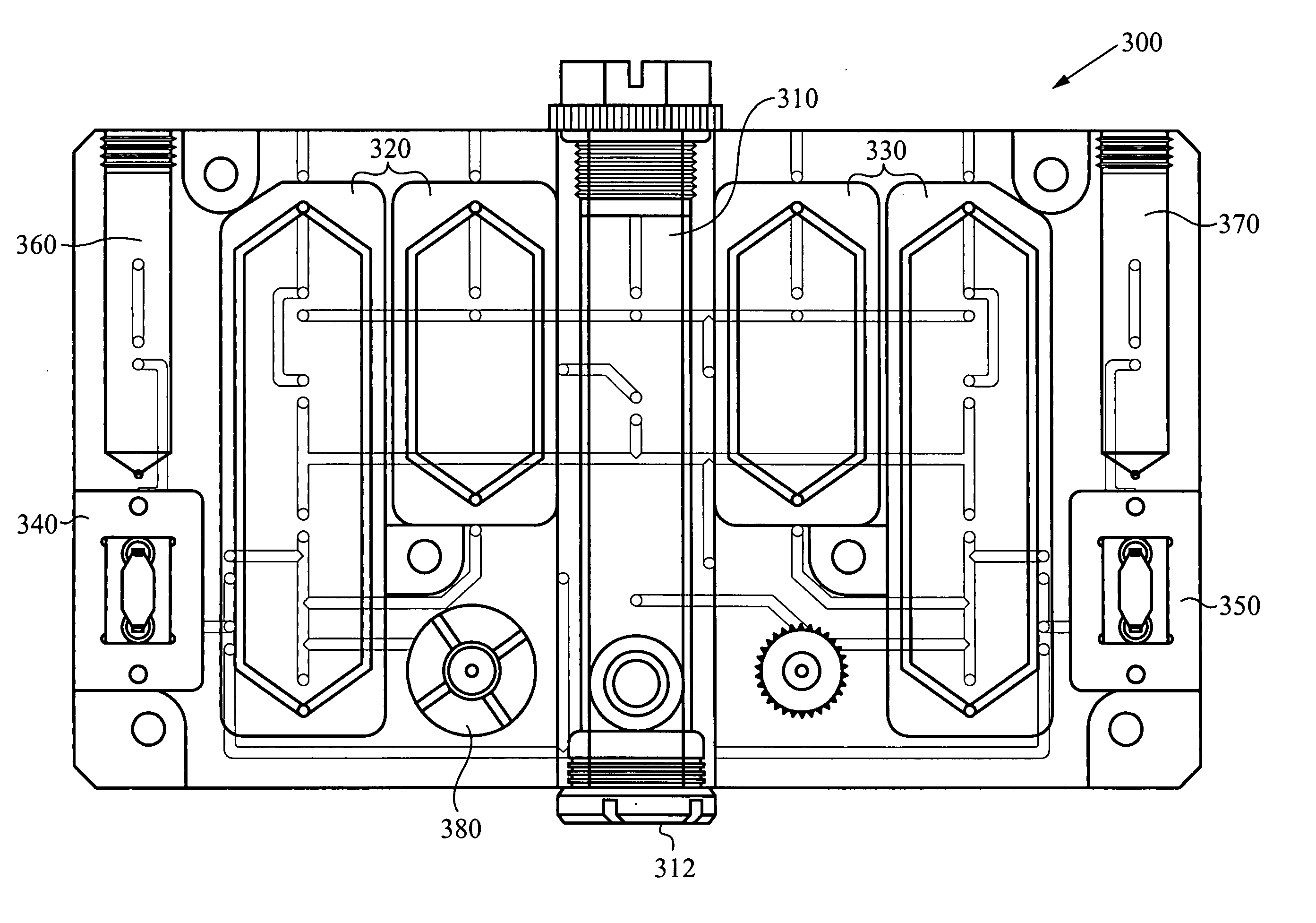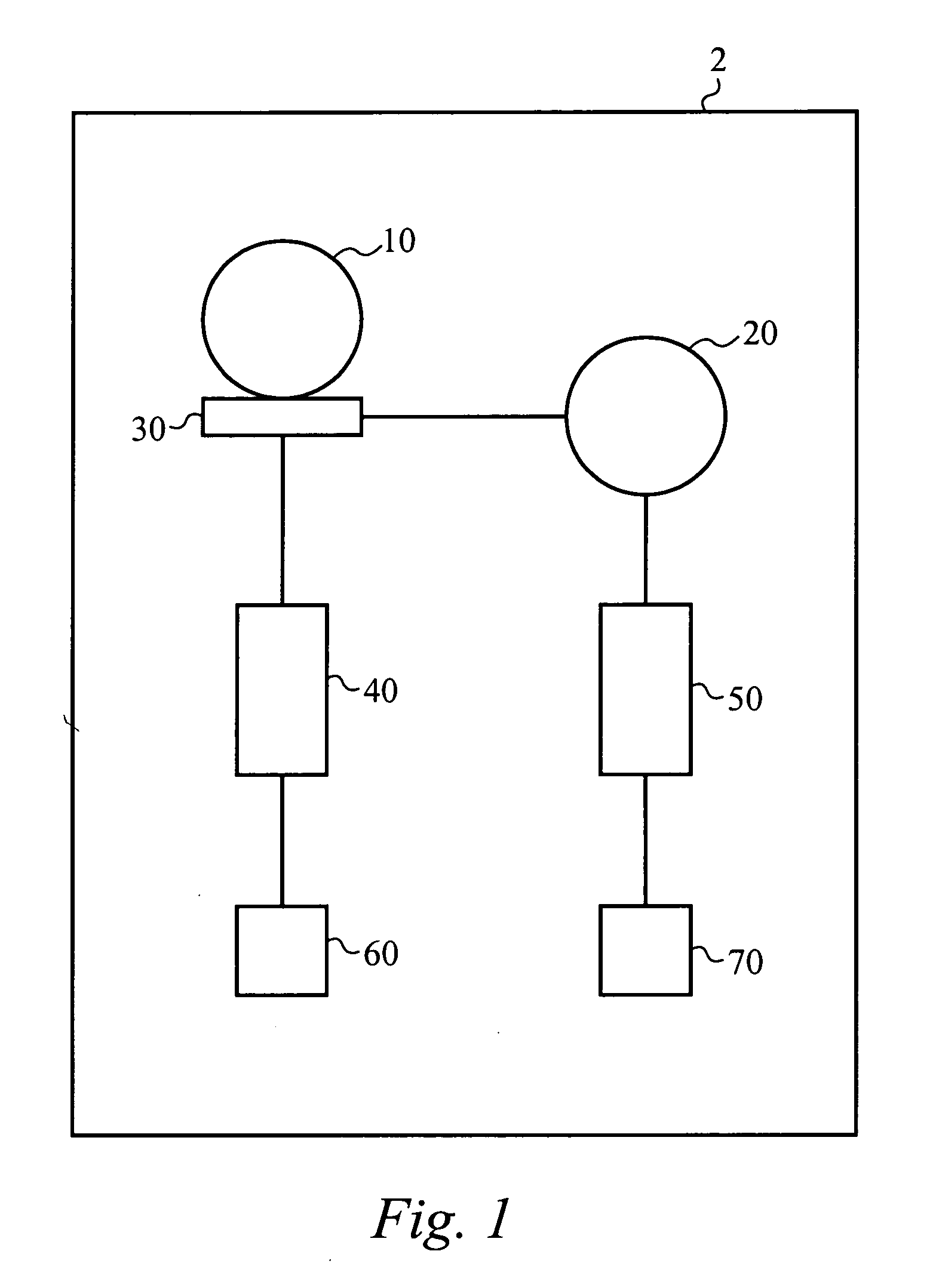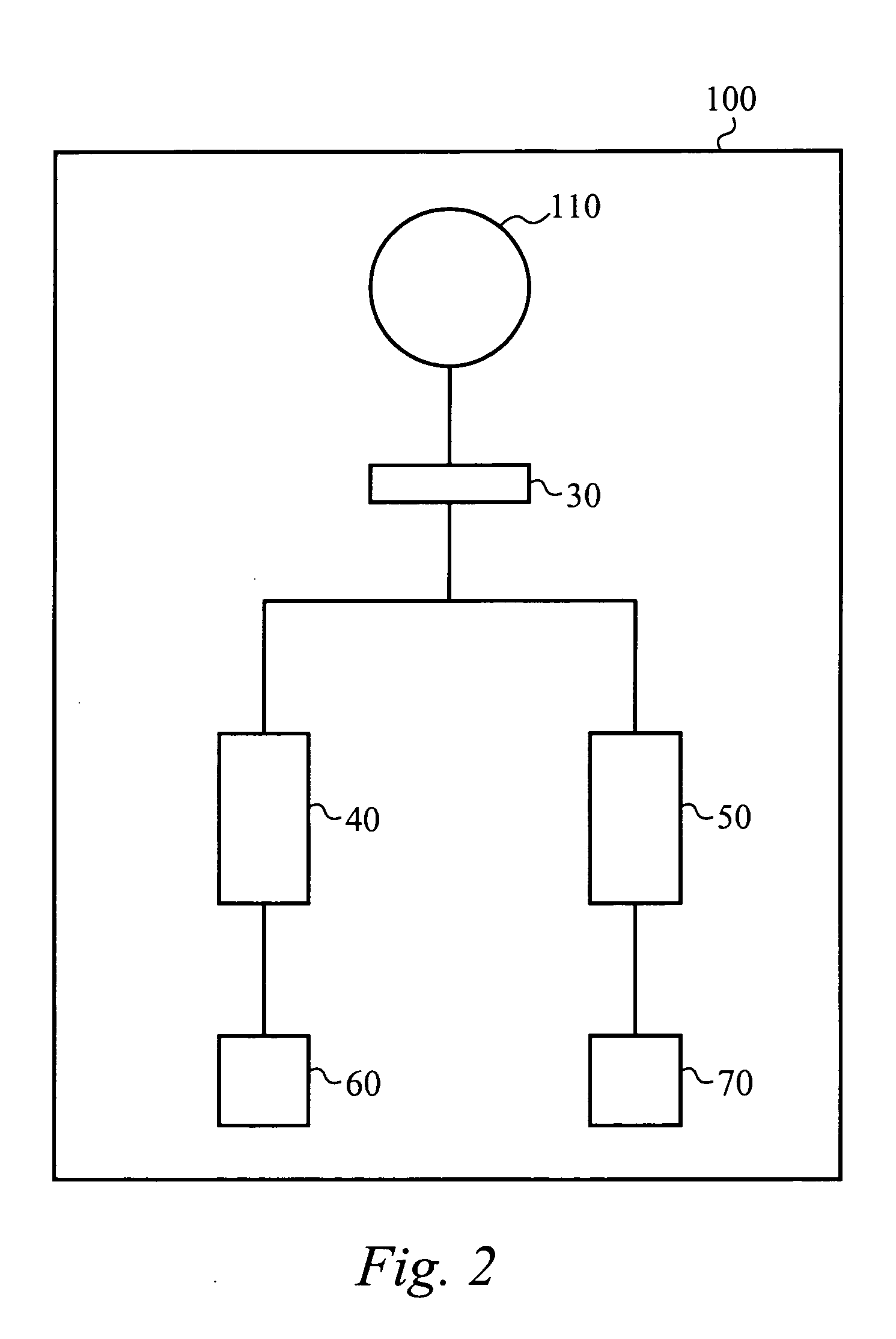Microfluidic differential extraction cartridge
a technology microfluidics, which is applied in the field of differential cell lysis methods and apparatuses, can solve the problems of shock waves radiating through the sample, physical lysis often requires expensive, cumbersome equipment,
- Summary
- Abstract
- Description
- Claims
- Application Information
AI Technical Summary
Problems solved by technology
Method used
Image
Examples
first embodiment
[0030]FIG. 1 illustrates a conceptual block diagram of a sonication apparatus 2 to selectively lyse a mixed sample using sonication according to the present invention. The mixed sample includes at least two different cell types. For example, the sample can be a rape kit sample that includes female epithelial cells and male sperm cells. A first cell type within the mixed sample is lysed at a first sonication energy, and a second cell type is lysed at a second sonication energy. The apparatus 2 includes a first sonication chamber 10, a second sonication chamber 20, a separating means 30, a first purification chip 40, a second purification chip 50, a first output vessel 60, and a second output vessel 70, each of which is coupled using microfluidic circuitry, which is discussed in greater detail below. The mixed sample is placed in the first sonication chamber 10. The first sonication chamber 10 provides the first sonication energy to the mixed sample, thereby lysing the first cell type...
second embodiment
[0038]FIG. 2 illustrates a conceptual block diagram of a sonication apparatus 100 to selectively lyse a mixed sample using sonication according to the present invention. The sonication apparatus 100 operates similarly to the sonication apparatus 2 except that the two sonication chambers 10 and 20 are replaced by a single sonication chamber 110. In operation, the first sonication chamber 110 receives the mixed sample and the first sonication energy is applied, thereby lysing the first cell type and producing the first lysate. The first lysate is separated from the mixed sample by the separating means 30, such that the first lysate passes through the separating means 30 and the intact second cell type is blocked by the separating means 30. The first lysate is directed to the first purification chip 40 as described above in relation to the preferred sonication apparatus 2. The blocked second cell type is back flushed from the separating means 30 to the sonication chamber 110. The sonic...
third embodiment
[0039]FIG. 3 illustrates a conceptual block diagram of a sonication apparatus 200 to selectively lyse a mixed sample using sonication according to the present invention. The sonication apparatus 200 includes a single sonication chamber 210 and a single purification chip 240. The sonication chamber 210 receives the mixed sample and provides the first sonication energy as described in detail above. The first lysate passes through the separating means 230 to the purification chip 240. The purification chip 240 purifies and concentrates the first DNA from within the first lysate and the remaining portion of the first lysate passes though as waste. Te collected first DNA is flushed from the purification chip 240 and is collected in the first output vessel 260. Flushing the first DNA also acts to clean the purification chip 240. Alternatively, after the first DNA is flushed from the purification chip 240 to the first output vessel 260, a cleaning step is performed in which the purificatio...
PUM
| Property | Measurement | Unit |
|---|---|---|
| diameter | aaaaa | aaaaa |
| diameter | aaaaa | aaaaa |
| energy | aaaaa | aaaaa |
Abstract
Description
Claims
Application Information
 Login to View More
Login to View More - R&D
- Intellectual Property
- Life Sciences
- Materials
- Tech Scout
- Unparalleled Data Quality
- Higher Quality Content
- 60% Fewer Hallucinations
Browse by: Latest US Patents, China's latest patents, Technical Efficacy Thesaurus, Application Domain, Technology Topic, Popular Technical Reports.
© 2025 PatSnap. All rights reserved.Legal|Privacy policy|Modern Slavery Act Transparency Statement|Sitemap|About US| Contact US: help@patsnap.com



